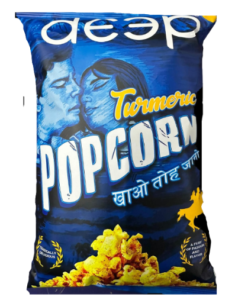As a reminder, “Edibles & Potables” is F&D’s Sunday slot for food and dining topics that range outside our customary Metro Louisville coverage area, and every other Wednesday (more or less) is given over to “Hip Hops,” a wide-angle consideration of beer news and views.
 I saw the headline and thought immediately of my favorite turmeric-dusted popcorn (available at Spiceland Indian Grocery in Clarksville), but The Economist’s article isn’t concerned with Deep. It’s about daily in South Asia, as in the adulteration of turmeric to enrich its color, and how this practice can lead to lead poisoning.
I saw the headline and thought immediately of my favorite turmeric-dusted popcorn (available at Spiceland Indian Grocery in Clarksville), but The Economist’s article isn’t concerned with Deep. It’s about daily in South Asia, as in the adulteration of turmeric to enrich its color, and how this practice can lead to lead poisoning.
Bangladesh has moved aggressively to put a stop to the practice: “In less than two years, the share of turmeric samples in Bangladeshi markets that contained detectable lead fell from 47% to 0%.”
Lead poisoning: How to stop turmeric from killing people
Turmeric, a flowering plant of the ginger family, has long been prized in Ayurvedic medicine for its anti-inflammatory properties and in Asian cuisines for its earthy flavour and vibrant hue. Haldi, the spice’s Hindi name, is derived from the Sanskrit for “golden coloured”. But for the millions of South Asians who habitually consume it, turmeric’s skin-staining yellowness can be deceptive and deadly.
To heighten their colour, the rhizomes from which the spice is extracted are routinely dusted with lead chromate, a neurotoxin. The practice helps explain why South Asia has the highest rates of lead poisoning in the world. The heart and brain diseases it causes—to which children are especially susceptible—accounted for at least 1.4m deaths in the region in 2019. The economic cost is crippling; that year lead poisoning is estimated to have lowered South Asian productivity by the equivalent of 9% of gdp. Yet it turns out that with clever policies, enlightened leadership and astute messaging this blight can be greatly reduced. Bangladesh has shown how.
Photo credit: Turmeric Chicken Coconut Curry, at Get Inspired Everyday.






















